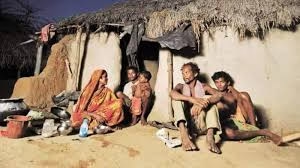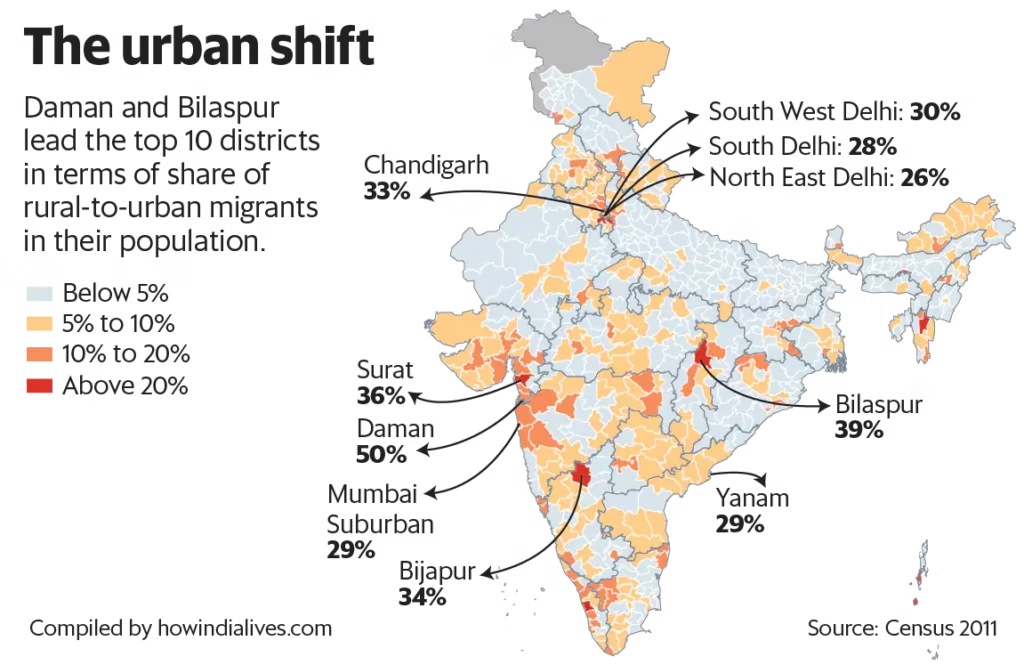2024 Global Multidimensional Poverty Index highlights that India is among the five countries with the largest population of people living in poverty.
What is the Global Multidimensional Poverty Index (MPI)? What are the key highlights of the Global MPI? How is the Global Multidimensional Poverty Index different from the National Multidimensional Poverty Index?
Why in News?
India, with 234 million people living in poverty, is among the countries with the largest number of extreme poor, according to the latest Global Multidimensional Poverty Index (MPI) report. The report also found that 1.1 billion out of the 6.3 billion people in 112 countries live in acute poverty worldwide.
World Bank – Poverty
According to the World Bank, poverty is “pronounced deprivation in well-being”. The poor are those who do not have enough income or consumption to put them above some adequate minimum threshold. It is not only about the absence of financial resources but also the deprivation of various dimensions of life.
The 2024 Multidimensional Poverty Index was published on 17th October on the International Day for the Eradication of Poverty by the Oxford Poverty and Human Development Initiative (OPHI) and the Human Development Report Office of the United Nations Development Programme. It was first launched in 2010.
It aims to push forward the goal of Sustainable Development Goal (SDG)- 1— ending poverty in all its forms everywhere —and measures interconnected deprivations across indicators related to SDGs 1, 2, 3, 4, 6, 7, and 11.
The Global MPI uses 10 indicators covering three main areas: (i) health, (ii) education, and (iii) standard of living. These three dimensions have one-third weight each in the final index.
The health dimension includes nutrition and child & adolescent mortality indicators. The education dimension includes years of schooling and school attendance indicators. The standard of living dimension includes six household-specific indicators: housing, household assets, type of cooking fuel, access to sanitation, drinking water, and electricity.

Who id MPI Poor?
The MPI assesses poverty at the individual level. If a person is deprived in a third or more of ten (weighted) indicators, the global MPI identifies them as ‘MPI poor’.
Highlights from the Report
Out of a total population of 6.3 billion, 1.1 billion individuals (18.3 percent) are currently experiencing acute multidimensional poverty in 112 countries. 584 million children under the age of 18 make up more than half of the 1.1 billion poor people.
The UNDP’s MPI halved from 55.1 per cent to 27.7 per cent between 2005-06 to 2015-16. That means about 271 million people moved out of poverty.
Nearly 40% of the 1.1 billion poor (455 million) live in countries exposed to violent conflict, hindering and even reversing hard-won progress to reduce poverty.
The report pointed out that the countries with the lowest Human Development Index (HDI) values tend to have the highest MPI values and the highest proportion of people living in poverty, but a large share of people also reside in medium HDI countries like India.
The five countries with the largest number of people living in poverty are India (234 million), which is medium HDI, and Pakistan (93 million), Ethiopia (86 million), Nigeria (74 million) and the Democratic Republic of the Congo (66 million), all low HDI.
India’s MPI value is 0.069. The lower MPI values represent a better performance regarding multidimensional poverty. The higher MPI value is of Niger, 0.601 and the lowest is of Serbia with an MPI value of 0.
Human Development Index (HDI)
India’s HDI value has increased to 0.644 in 2022, placing the country at 134 out of 193 countries and territories in the released 2023/24 Human Development Report (HDR). The HDR has placed India in the medium human development category.
NITI Aayog MPI
NITI Aayog in collaboration with the UNDP and OPHI developed the National Multidimensional Poverty Index (MPI) in November 2021 that offers a multi-dimensional perspective on poverty.
It uses the internationally acclaimed Alkire Foster methodology with the difference that National MPI covers 12 indicators while global MPI covers 10 indicators. The recent report on National MPI was based on National Family Health Surveys 4 (2015-16) and 5 (2019-21).
National MPI has retained the 10 indicators of Global MPI and included two additional indicators, namely Maternal Health (in the dimension of Health) and Bank Account (in the dimension of Standard of Living).
The share of India’s population living in multidimensional poverty is estimated to have fallen to 11.28 per cent in 2022-23 from 29.17 per cent in 2013-14, according to a discussion paper, Multidimensional Poverty in India Since 2005-06, published by NITI Aayog on Jan 15.
In absolute numbers, NITI Aayog estimates a total of 24.82 crore people escaped multidimensional poverty in the last nine years. States like Uttar Pradesh, Bihar,Madhya Pradesh, and Rajasthan recorded the sharpest decline in the number of people classified as poor based on the Multidimensional Poverty Index (MPI).
According to the estimated share of MPI poor in 2013-14 and 2022-23, Bihar recorded a 53 per cent drop from 56.3 per cent share of MPI poor in 2013-14 to 26.59 per cent in 2022-23. Jharkhand also recorded a 50 per cent drop from 47.13 per cent share of MPI poor to 23.34 per cent.
Six official committees have so far estimated the number of people living in poverty in India — the working group of 1962; V N Dandekar and N Rath in 1971; Y K Alagh in 1979; D T Lakdawala in 1993; Suresh Tendulkar in 2009; and C Rangarajan in 2014.
The government did not take a call on the report of the Rangarajan Committee; therefore, poverty is measured using the Tendulkar poverty line. As per this, 21.9% of people in India live below the poverty line.


